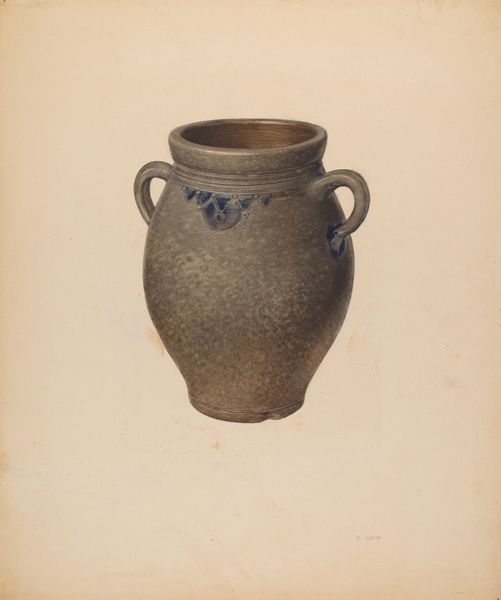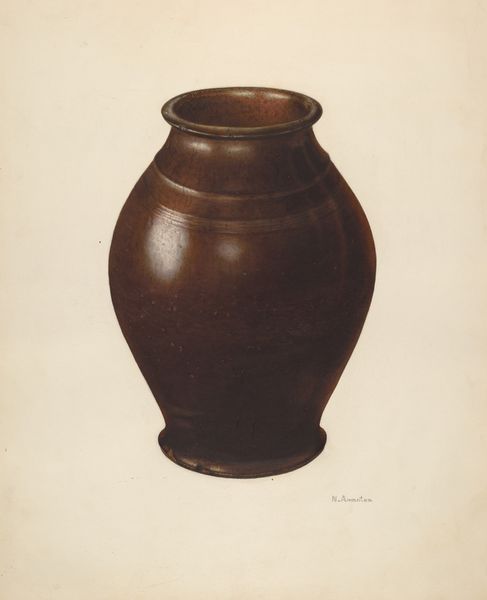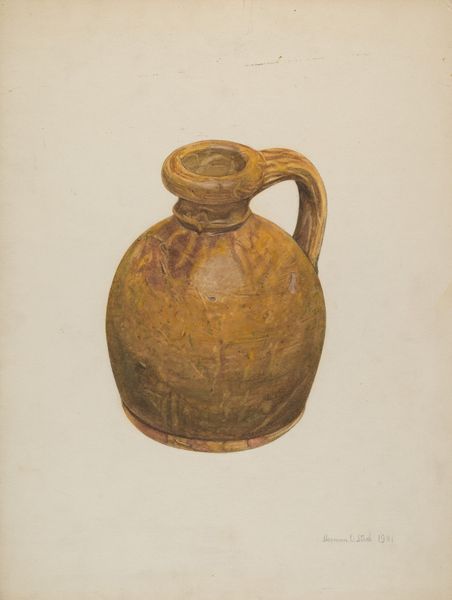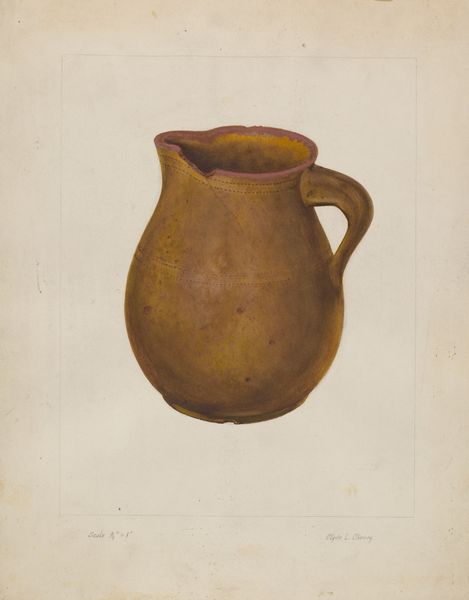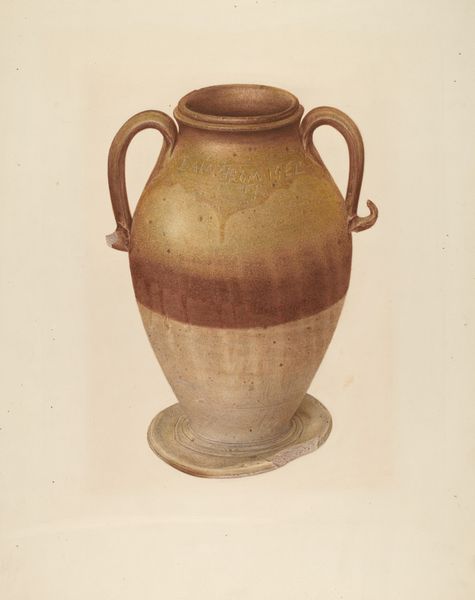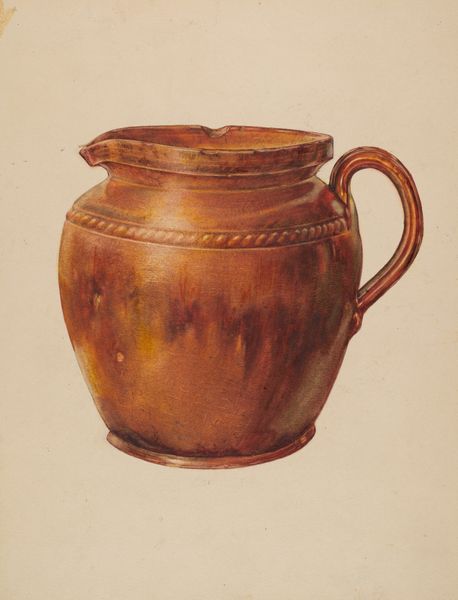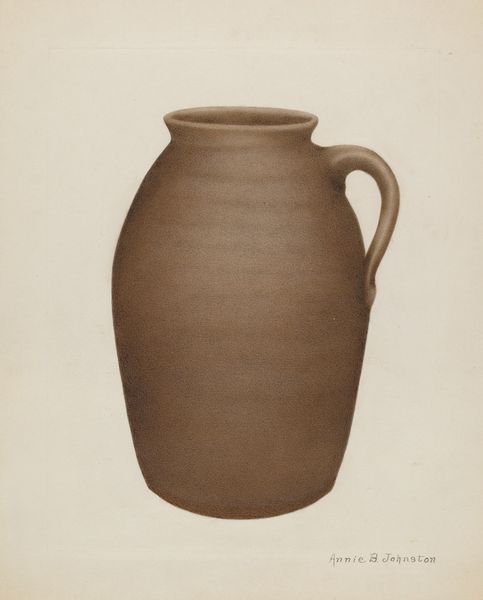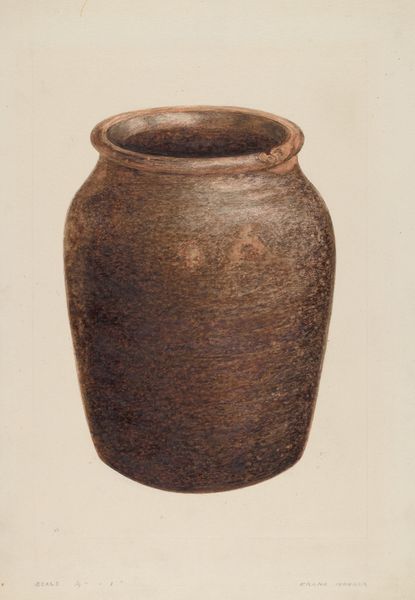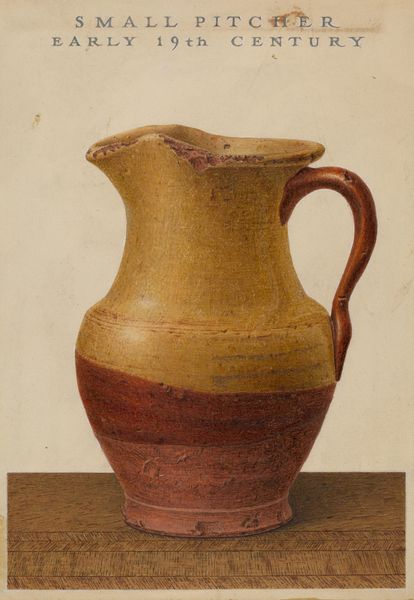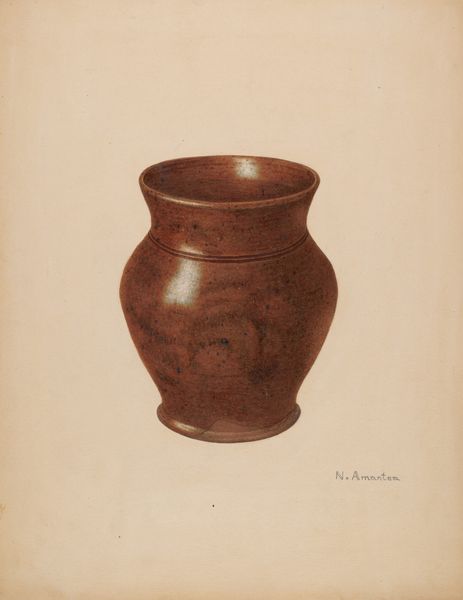
drawing, ceramic, watercolor
#
drawing
#
ceramic
#
charcoal drawing
#
watercolor
#
stoneware
#
ceramic
#
watercolour illustration
Dimensions: overall: 27.9 x 22.8 cm (11 x 9 in.) Original IAD Object: 11 1/2" High 9" Dia. at waist
Copyright: National Gallery of Art: CC0 1.0
Editor: This is Annie B. Johnston's "Stoneware Jar," created around 1938. It seems to be rendered in watercolor and charcoal, a delicate depiction of such a robust object. It has a still and simple quality, almost like a study. What draws your eye to this particular artwork? Curator: The composition’s deliberate simplicity is, I believe, the key to appreciating it. Notice how Johnston centres the jar. There's an emphasis on form. Observe how the colour palette – various shades of brown and grey – creates a textural surface. The drawing and watercolor techniques also contribute to the overall structure; Johnston clearly understood form, weight, and balance, evident in her capturing the solidity of the stoneware. Do you see how light interacts with the curves and lines? Editor: Yes, now that you point it out, I see how the subtle shifts in tone articulate the volume and contour of the jar so it doesn't feel flat. What's your impression of the way it's been rendered in watercolour? Curator: Exactly. And regarding the use of watercolour – Johnston coaxes depth out of an unassuming scene by building thin washes and contrasting the porous character of the stoneware with the translucent watercolour. In that respect, do the paired handles not contribute an elegance, and symmetry? It is almost totemic. Editor: The handles are almost like the ears of an amphora, giving it an anthropomorphic air! The evenhanded colour and tone also seem so unified; almost seamless. Curator: Indeed! This consistent textural integration certainly results in the successful illusion of form and gives this stoneware vessel an exceptional presence. It highlights how ordinary things, meticulously represented, take on exceptional meaning through art. Editor: I see how analyzing form and materials heightens my awareness of its composition. Thank you. Curator: My pleasure. And understanding compositional components is fundamental to appreciating any work!
Comments
No comments
Be the first to comment and join the conversation on the ultimate creative platform.

